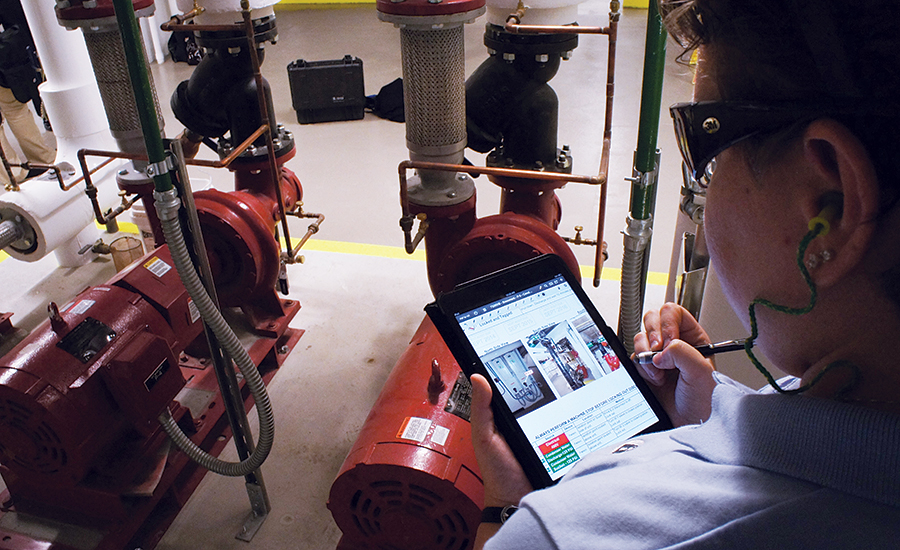Damn it! We still don’t have the settings right and we need to get this filling machine running yesterday.”
The lead technician yells out as if someone was there listening, but he’s working alone. Steven, a line mechanic with more than 25 years’ experience has seen this problem before, but this time it’s more difficult to identify the root cause and fix.
A passer-by asks him what he’s doing servicing the filling machine without locking it out. Steven argues for a minute then goes about his business. The next day, he’s called into the HR office. He’s informed he is terminated effective immediately for failing to lock out the machine. His retort to the HR manager – “You may not know this, but this company expects me to do what I do in order to keep this business afloat.” The HR manager dismisses his comment, and they complete the termination paperwork.
Fast forward three years. The company is out of business due to rising costs of manufacturing in the U.S. Regs are said to be partly to blame. For instance, safety policies often are built around the regulatory interpretation that under no circumstances can you service a piece of live, energized equipment. This is not true. And this misinterpretation can cost companies untold amounts in lost productivity.
The solution is not so easy
So what is the answer? Do away with lockout-tagout? Actually yes, but it’s not that easy.
To understand how to engineer out the need for lockout-tagout, you must understand what OSHA policy makers were thinking when they made the LOTO regulation in 1989.
The core intent of the regulation is this: To prevent unexpected startup of equipment from causing harm to employees while servicing.
It’s simple and makes sense. But what if you need a machine partially live to do the service work? What if a shutdown causes downtime and you can easily do the task if you only partially shut it down or avoid the shutdown altogether?
OSHA wrote in an exception to the lockout-tagout clause they released in 1989. But you can’t use the exception to increase risk exposure to an employee. If you’re going to use an alternative procedure from lockout-tagout, be sure it’s effectively equivalent to lockout-tagout. Otherwise, you’ll be cited for failing to comply with the lockout-tagout standard.
OSHA requires you have to a lockout-tagout procedure to provide protection during any type of service — from lubrication and unjamming to installation and removal of equipment. OSHA does not require additional procedures that might help make production improvements, but it takes the position that as long as your alternative is proven to be as effective to lockout-tagout for the particular service, then it’s permitted.
What does it mean to be “as effective as lockout-tagout”? Industry best practices are evolving and companies are quickly realizing that lockout-tagout is not a production killer unless you let it be. By taking another look at the overall lockout-tagout safety program, companies can oftentimes loosen up on the policy and incorporate Alternative Protection Measure (APM) procedures. These procedures serve as the means to control the machine in a safe state in order to safely perform a prescribed service.
Avoid the pittfalls
Where these procedures and this methodology often go wrong is when a company simply says, “Use the guards as alternatives.” Or another favorite: “Use the e-stops for minor servicing.” This is illegal because it’s not documented or proven effective.
To successfully implement an APM program, you must plan accordingly to list the machines you want to engineer in alternatives for. Whatever procedure you develop must have limitations to what servicing activities can occur and what areas of the machine this covers. Most importantly, a properly engineered safety program must include means to verify that the procedure is effective – every time. A good example: Attempt to restart at the control panel.
Why wade into the gray area and make these alternative procedures when, if you make a wrong procedure, you’ll be cited for violating lockout-tagout?
Because your people are already doing it and it’s not being documented.
Keep risk low & productivity high
Steven was right, the company did expect him (unofficially) to do what he did when he serviced without locking out. The company was wrong by not officially allowing his servicing through well-documented and tested procedures. Unfortunately, it’s too late to hire Steven back and too late to save the company from shutting down.
Remember one golden rule when engineering out lockout-tagout: No additional risk can be introduced to the employees by using alternative procedures. If you can design alternative procedures and an overall alternative program to ensure equivalent protection for specific tasks, the sky is the limit to enhancing productivity.
DISCLAIMER: While it may be possible to engineer out many servicing activities with well-engineered safety procedures and high performance hardware, Rockwell Automation always recommends users follow lockout-tagout regulations when performing service on equipment where no “company approved” safe alternatives exist. Lastly, users shall assure themselves that all maintenance and servicing procedures are safe, effective, and properly tested according to good practice and regulation.

